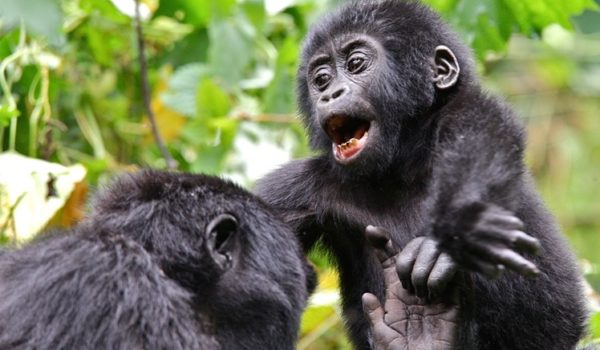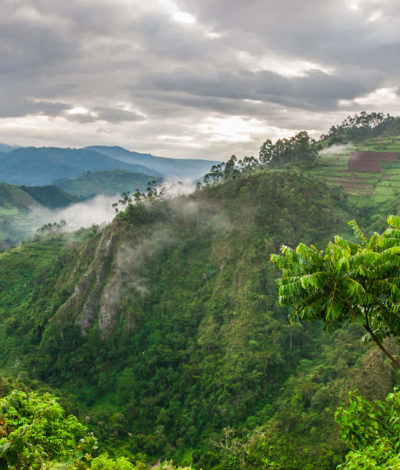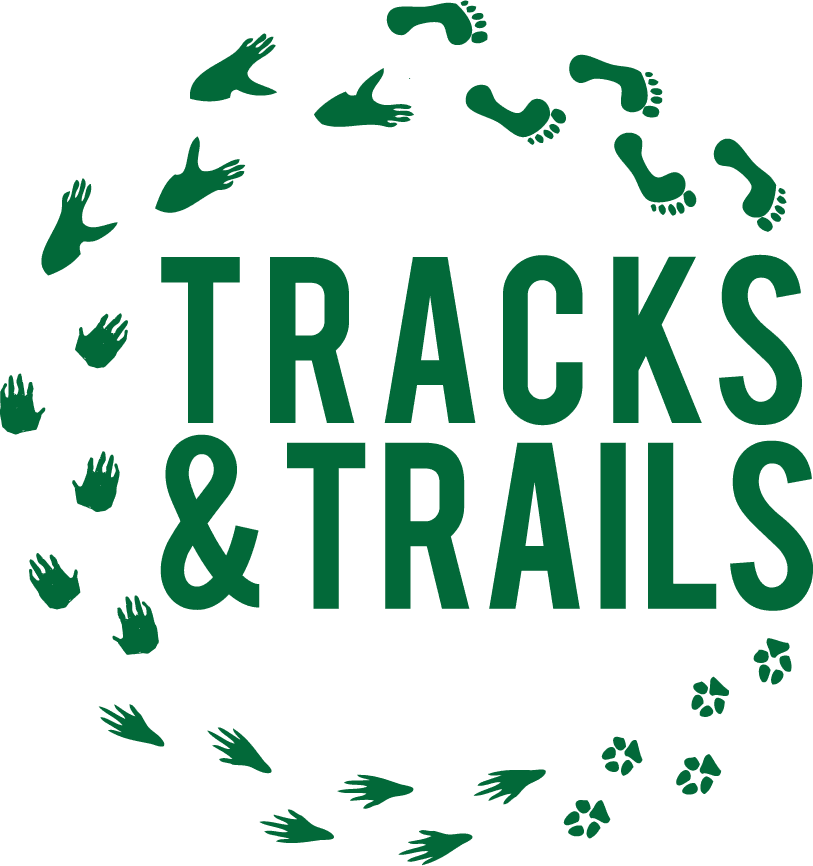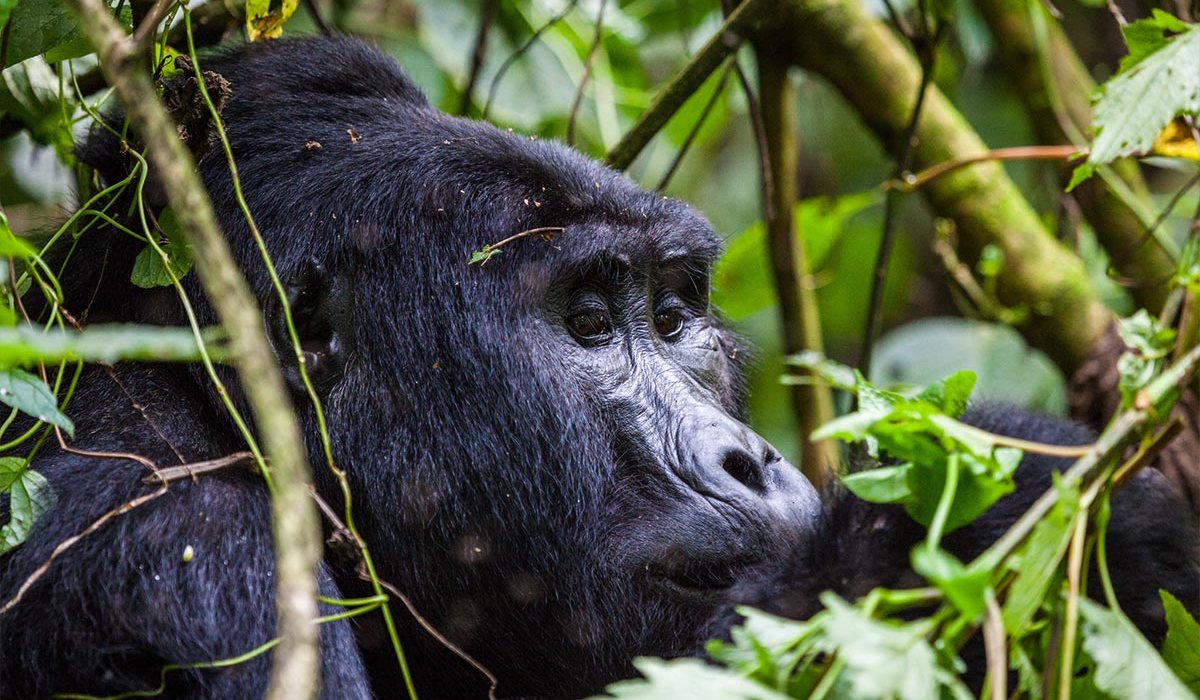Gorilla Trekking
A Gorilla Trek is a highlight of all visits done in Uganda and Rwanda and certainly mountain gorillas are the major reason as to why very many people visit these 2 destinations. However, it can be noted that mountain gorillas are limited in range to the Bwindi Impenetrable National Park and the Virunga massif which comprise of Mgahinga National Park in Uganda, Volcanoes National Park in Rwanda and Virunga National Park in the Democratic Republic of Congo.
There are approximately 840 mountain gorillas living in the wild left in the world. Mountain gorillas roam in protected parks in only three countries in the world – the Democratic Republic of Congo, Rwanda and Uganda.

Is It Possible To Trek Uganda Gorillas From Kigali?
It is now possible to trek Uganda or Bwindi gorillas through Rwanda by flying through Kigali International airport. By flying through Kigali International Airport, one is able to reduce the drive time to Bwindi Impenetrable National Park to 5-6 hours compared to if one uses Entebbe International Airport where the drive time is 8-9 and sometimes 10 hours from Entebbe to Bwindi Impenetrable National Park. With the introduction of the East African tourist visa, one can now visit both Uganda and Rwanda without hassle. The good news also is that one can now apply for Rwanda Visa upon arrival something that is making the process of obtaining Rwanda visa easy. East African tourist visa costs USD100.00 and allows you to visit three east African countries of Uganda, Rwanda and Uganda.
When To Go To See The Mountain Gorillas In Africa?
Although tracking mountain gorillas can be conducted all year round in these two countries (Uganda & Rwanda) due to the somewhat damp seasons experienced by the national parks in which these gorillas stay, the majority of tourists prefer visiting from June to September as well as from December up to February.You can visit Bwindi at any time of the year, the low season calls for cheaper gorilla permit price.
Where To Stay ?
Choosing the best safari lodge or accommodation will depend on how much you can afford. Some lodges charge as high as, $900 while the budget ones can pocket as low as $ 70 for a double room. Its all about the facilities, location, food, services and so much more. Among the luxury include Clouds Lodge, Buhoma Lodge, Gorilla Forest Camp and Mahogany Springs. For the budget traveler, Nshongi Gorilla Resort is what we recommend.
How Much Does A Gorilla Safari Cost?
Of course, various tour operators will give you quotes, roughly the cheapest gorilla safari should have a price of about $ 1000 of course depending on the number of people. The super luxury should be cost you between $ 1500 to $ 2000 per person. Based on reviews of most tour operators in Uganda, most tourists prefer the mid-range, not so budget, but affordable. Booking your safari during the low season should get those costs lowered!
How To Get A Gorilla Trekking Permit In Uganda?
Within Uganda, Gorilla trekking is conducted in Bwindi National Park or in Mgahinga National Park. But because of the inconsistency of gorillas in Mgahinga, majority of the sold permits are for Bwindi NP. In Uganda, every gorilla permit goes for US $ 600. In the past years, April, May and November used to cost US $ 450.Please note that these offers no longer exist. On a single day, nearly 72 people travel into Bwindi to see gorillas and only 8 people are allowed to see a gorilla family. We strongly encourage you to book your gorilla permit with a safari agent, the most prominent mistake is to book a gorilla family which is far away from your choice of accommodation! The routes to Bwindi and its various regions are often tricky; this is a remote area. If you would like to do the gorilla trek on your own so as to save costs, you might end up incurring more. Safari guides have been trained to help you with this.
How Do Mountain Gorillas Feed?
Uganda has two places where these Mountain Gorillas may be seen, one is Mgahinga Gorilla Park; a stunning park and a component of the Virunga chain of towering volcanoes that extend into the DRC and Rwanda, and then in Bwindi Impenetrable Forest National Park. Bwindi Impenetrable Forest supports the hugest Population of Mountain Gorilla.
It is a ancient forest also called the “Place of Darkness.” The tree cover makes it very dark within this forest. The forest’s altitudes are between 1,160m and 2,607m above sea level. The Bwindi plus Mgahinga each possess varying characteristics as well as similarities. The Bwindi isn’t an extinct volcanic region while the Mgahinga is.
Are Mountain Gorillas Dangerous Species? Will The Hurt Me During The Trek?
Visitors into Bwindi Impenetrable Forest frequently inquire if mountain gorillas are dangerous? Although dominant and very strong, these are gentle as well as shy, and in addition the mountain gorillas which visitors see within Uganda have been habituated. In other words they are habituated to people, which process that takes close to 2 years.
Dian Fossey actually was against the idea of visiting mountain gorillas which is done today, however it’s the money collected that survival of this endangered species, and seen their number increase over the recent years. While mountain gorillas are threatened they do attack so as to protect their very own. When different Mountain Gorilla groups meet, there is a fight between the leader Silverbacks to death. Recently 2 Silverbacks fought within Democratic Republic of Congo and the rangers had to intervene.
Mountain gorillas exist in groups which differ in size from 2 – 30 or 40, however commonly in groups of 10. There is no specific mating season while babies are born through the year. The Males begin breeding at around 15 years while the females start giving birth between 10 and 12 years. Females can give birth after every 2 to 3 years giving birth to 4 – 6 offspring through their lifetime. Males leave their group at about 11 years of age, while a little over half of the females will leave their group. Mountain gorillas communicate through sounds like roars, grunts and shouts, and 25 sounds currently have been documented by researchers.


